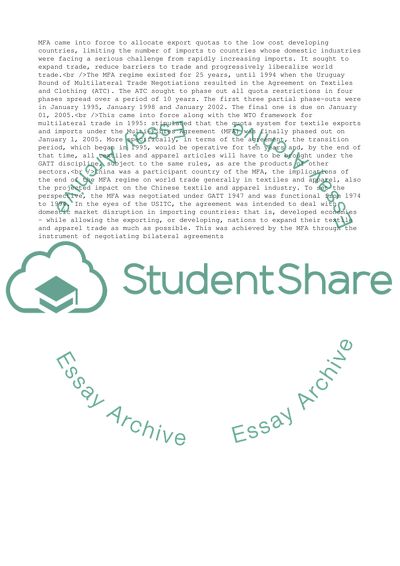Cite this document
(The Multi-Fibre Agreement Essay Example | Topics and Well Written Essays - 2250 words, n.d.)
The Multi-Fibre Agreement Essay Example | Topics and Well Written Essays - 2250 words. https://studentshare.org/business/1710410-business-economics
The Multi-Fibre Agreement Essay Example | Topics and Well Written Essays - 2250 words. https://studentshare.org/business/1710410-business-economics
(The Multi-Fibre Agreement Essay Example | Topics and Well Written Essays - 2250 Words)
The Multi-Fibre Agreement Essay Example | Topics and Well Written Essays - 2250 Words. https://studentshare.org/business/1710410-business-economics.
The Multi-Fibre Agreement Essay Example | Topics and Well Written Essays - 2250 Words. https://studentshare.org/business/1710410-business-economics.
“The Multi-Fibre Agreement Essay Example | Topics and Well Written Essays - 2250 Words”. https://studentshare.org/business/1710410-business-economics.


